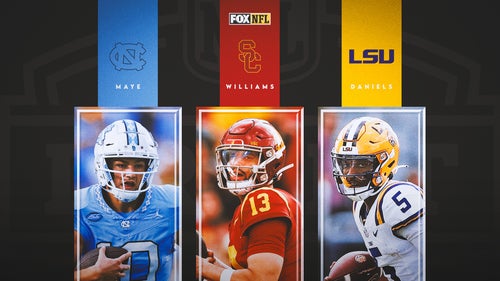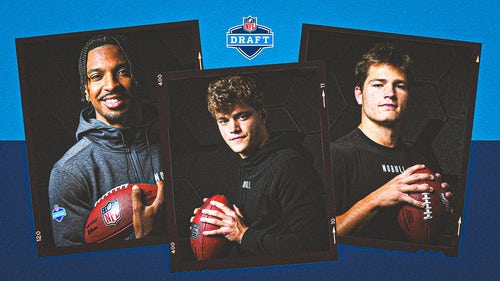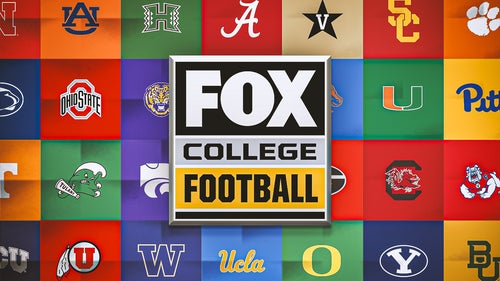
Season in review: Pac-12
The NCAA tournament tends to obscure everything that came before it in a given college basketball season. Which teams won those Thanksgiving-week nonconference tournaments? Which players were making compelling cases for national awards in December and January? The image of Kennedy Meeks, Justin Jackson, Joel Berry II, Isaiah Hicks and other North Carolina Tar Heels cutting down the nets in Glendale moments after a six-point win over Gonzaga in the title game won't fade away soon, but in the meantime, it's worth looking back at what else happened during the 2016–17 campaign. This is the fifth installment of a conference-by-conference review series. We've already reviewed the ACC, Big 12, AAC, Big East and Big Ten.
Nine years had passed since the Pac-12 (then the Pac-10) had last appeared in the Final Four before Oregon accomplished the feat in 2017. After UCLA made back-to-back-to-back trips to the NCAA tournament's final weekend from 2006 to 2008, the Pac-12 entered a drought, the only of the top seven conferences to not send at least one team in the window from 2009–2016. The Ducks themselves hadn't reached the Final Four since way back in 1939, the year of the program's only national title. That all changed this year, when the Dillon Brooks-led squad finally broke through, taking down No. 1 seed Kansas along the way before falling to eventual champion North Carolina.
The Final Four appearance was just what the Pac-12 needed, and its three Sweet 16 teams (Oregon, Arizona, UCLA) put it right alongside the Big 12, Big Ten and SEC. That's a strong overall postseason performance for a conference that only sent four teams to the Big Dance (the fourth, USC, won its play-in and pulled off a first-round upset over SMU before losing in the Round of 32).

The No. 21 Ducks and No. 2 Bruins kicked off Pac-12 play with a bang in Eugene, playing a thrilling 40 minutes that ended with a game-winning three-pointer by Dillon Brooks with 0.8 seconds remaining.
UCLA entered the day still riding the high from its early December road win over Kentucky, which had vaulted it from outside the top 10 to No. 2 in the polls. The Bruins had yet to lose, and Oregon was hoping to make a statement after stumbling a bit earlier in the season when Brooks was sidelined due to injury. So it was fitting that it was Brooks who won the game for the Ducks, shaking himself free thanks to a screen from Jordan Bell and hoisting up a three over Lonzo Ball that hit nothing but net.
Brooks's basic stats don't pop out in the way that Washington freshman Markelle Fultz's do, but Fultz's case is weaker for a few reasons, including his defense, efficiency and the strength of his team. Fultz had free reign in the Washington offense and put up a lot of points, but his efficient field-goal percentage (51.4%) and true shooting percentage (53.9%) in Pac-12 play paled in comparison to Brooks's, who shot 64.5% in the former and 65.3% in the latter, per kenpom.com.
Brooks was Oregon's leader, taking nearly one-third of the team's shots when he was on the floor, and while he didn't always have the flashiest stats, he put together a balanced season. Brooks and Fultz actually had almost identical offensive ratings on the season overall (113.3 vs. 113.6, respectively), but in conference play Brooks made his mark, posting a 121.5 rating compared to Fultz's 108.1. Brooks also played an instrumental role in Oregon's Final Four run, including a 17-point, five-rebound, four-assist effort in a win over Kansas.
In guiding a Final Four team, Altman not only did something no Pac-12 coach had done since 2008, but also something that was a first for Altman himself. When the Ducks suddenly lost the services of top reserve and third-leading scorer Chris Boucher just a week before the NCAA tournament, they were able to overcome it in large part due to the play of Bell. Bell was originally a three-star recruit who chose Oregon over Auburn back in 2013. Under Altman, he became the ultimate glue guy in his junior season, the kind a team needs to make a deep tourney run. Bell averaged 12.6 points, 13.2 rebounds and 3.2 blocks during the Ducks' run, and Altman managed the loss of depth created by Boucher's injury by expertly navigating what was essentially a six, occasionally seven-man rotation. And while Oregon brought back largely the same core from its 31–7 team in 2015–16, it greatly improved on its biggest weakness—three-point defense—an ability that proved essential in its NCAA wins over Michigan and Kansas.

There was an abundance of new and elite talent in the Pac-12 in 2016–17. In addition to Fultz, star freshmen included UCLA's Ball and T.J. Leaf and Arizona's Lauri Markkanen and Rawle Alkins. Plus, on the transfer side, there was Arizona State's Torian Graham and Shannon Evans II and Colorado's Derrick White. Ball gets the nod here for leading UCLA's potent offense, and leading it well. The point guard led the nation in assists with 7.7 per game, and his assist rate of 31.5% was third in conference play.
The Bruins' offense ranked second in the country in adjusted offensive efficiency, per kenpom.com, and was the only one in the top five to start a freshman point guard. Ball's 68.0% efficient field-goal percentage topped the Pac-12 in conference play, as did his 74.1% two-point field-goal percentage. Ball often displayed elite court vision, and while over half of his shots came from behind the arc, he knocked them down at a 41.2% clip.

There weren't too many out-of-the-ordinary things during the Pac-12 regular season, as Oregon, Arizona and UCLA finished on top, as expected. But despite a 29–5 record heading into the NCAA tournament, the Ducks earned a No. 3 seed—just two days after forward Chris Boucher tore his ACL during the Pac-12 tournament, ending his season. It was a tough blow for Oregon, one that seemed to put a significant dent in both its Final Four and national championship chances. The Ducks were also in the same region as No. 1 seed Kansas, which seemed likely to have been the top overall seed had it not lost in the Big 12 quarterfinal without Josh Jackson.
During its Final Four run, Oregon opened with wins over Iona and Rhode Island before halting a red-hot Michigan squad that had just upended No. 2 seed Louisville. That set up the Elite Eight showdown with the Jayhawks, who had rolled over UC Davis, Michigan State and Purdue in the first three rounds and showed no signs of slowing down. But the Ducks' defense turned around a Kansas offense that was averaging 96 points per game in the tournament and held it to 60 points in a 14-point win, a tremendous performance that gave it the Midwest Region title.

Despite bringing in dynamic freshman Markelle Fultz, the Huskies weren't expected to have a great season. After the graduation of Andrew Andrews and the early departures of Dejounte Murray and Marquese Chriss to the NBA, there simply wasn't enough around Fultz to be a serious contender. But the disaster of a season Washington underwent was not what either it or Fultz envisioned in his lone year in college.
Fultz led the Pac-12 in scoring and was sixth in the country with 23.2 points per game on 47.6% shooting (41.3% from three), but the Huskies won just nine games all season and went a putrid 2–16 in conference play. Their best win over the year was on Jan. 18 over Colorado, which finished seventh in the Pac-12, and it was also their final win; they would finish the season with a 13-game losing streak (Fultz did not play in six of the final eight games). It all ended in the firing of head coach Lorenzo Romar after 15 seasons and longtime Syracuse assistant Mike Hopkins replacing him.

Sean Miller has been one of the most snake-bitten coaches in college basketball as he continues to work for his first Final Four berth. In the last seven seasons under Miller, the Wildcats have been to three Elite Eights and two more Sweet 16s, including an appearance in 2017, but have failed to make that breakthrough to the tournament's final weekend (the program's overall last Final Four trip was in 2001).
But Arizona stands to be loaded going into 2017–18, which will both ramp up the expectations and put even more pressure on Miller and the ’Cats to make this the year. They lose freshman standout Markkanen, as expected, but leading scorer Allonzo Trier and freshman Alkins both opted to return to school and join a core that includes 7-footer Dusan Ristic and rising senior Parker Jackson-Cartwright.
Additionally, Arizona brings in a heralded recruiting class highlighted by 2017's No. 3 recruit, center DeAndre Ayton. Ayton's commitment was a big win for Miller, with the 7-footer choosing the Wildcats over Kentucky and Kansas. Also included in the nation's third-ranked recruiting class is five-star small forward Emmanuel Akot, who reclassified from 2018, and four-stars Brandon Randolph, Ira Lee and Alex Barcello. All five-players are ranked inside Scout.com's 2017 top 100.










































































































































